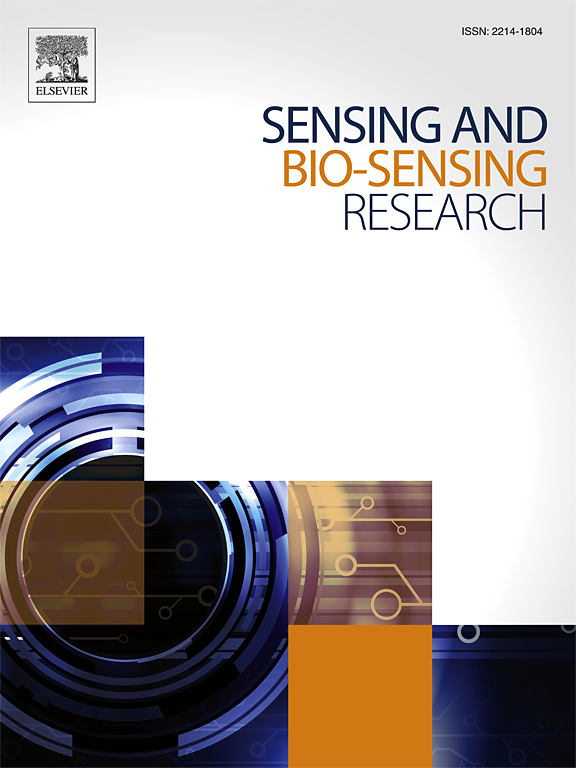卷积神经网络与传统特征提取技术在碎牛肉掺假检测中的比较研究
IF 5.4
Q1 CHEMISTRY, ANALYTICAL
引用次数: 0
摘要
在世界许多地方,肉制品(包括肉末)中存在掺假现象是一个严重的问题。因此,寻找快速、无损和有效的方法来检测肉末中的掺假已经取得了显著的进展。在本研究中,研究了热成像,以检测掺假的碎牛肉在两个数据集,包括羊肺和鸡胗作为杂质。为了确定最合适的特征提取算法并对不同掺杂程度的样本进行分类,比较了局部二值模式(LBP)、灰度共生矩阵(GLCM)和Gabor滤波器。卷积神经网络(CNN)也被用于提取特征和分类图像。为了评估这些算法,使用以下标准:准确性、精密度、召回率、特异性和f分。结果表明,对于两个数据集,使用Gabor滤波器获得的性能最好,而使用LBP算法获得的性能最差。然而,CNN在两个数据集中的总准确率超过99%,超过了其他方法,被推荐为分析掺入禽肉和羊内脏的碎牛肉热图像的最佳方法。这表明CNN算法在识别肉末掺假方面优于机器学习算法。本文给出的实验结果和相关数据分析表明,热成像技术在识别肉类欺诈方面的适当使用,可以适用于在线应用。本文章由计算机程序翻译,如有差异,请以英文原文为准。
A comparative study of convolutional neural networks and traditional feature extraction techniques for adulteration detection in ground beef
The presence of adulteration in meat products, including minced meat, is a serious concern in many parts of the world. Therefore, notable efforts have been made to find fast, non-destructive and efficient methods to detect adulteration in minced meat. In this research, thermal imaging was investigated to detect adulteration of ground beef in two data sets that included sheep lung and chicken gizzard as impurities. In order to identify the most appropriate feature extraction algorithm and classify samples having various levels of adulteration, Local Binary Pattern (LBP), Gray Level Co-occurrence Matrixes (GLCM) and Gabor filter were compared. Convolutional Neural Network (CNN) was also used to extract features and classify images. In order to evaluate these algorithms, the following criteria were utilized: accuracy, precision, recall, specificity and F-score. Results showed that for both datasets, the best performance was obtained using the Gabor filter while the weakest performance was related to the LBP algorithm. However, CNN, with a total accuracy of over 99 % in both data sets, was found to surpass the other methods and is recommended as the best approach for analyzing thermal images of ground beef adulterated with avian and ovine offal. This shows the superiority of CNN algorithm over machine learning algorithms in identifying adulteration in minced meat. The experimental results and the associated data analysis presented here show the appropriate use of thermography in identifying meat fraud, which can be suitable for online applications.
求助全文
通过发布文献求助,成功后即可免费获取论文全文。
去求助
来源期刊

Sensing and Bio-Sensing Research
Engineering-Electrical and Electronic Engineering
CiteScore
10.70
自引率
3.80%
发文量
68
审稿时长
87 days
期刊介绍:
Sensing and Bio-Sensing Research is an open access journal dedicated to the research, design, development, and application of bio-sensing and sensing technologies. The editors will accept research papers, reviews, field trials, and validation studies that are of significant relevance. These submissions should describe new concepts, enhance understanding of the field, or offer insights into the practical application, manufacturing, and commercialization of bio-sensing and sensing technologies.
The journal covers a wide range of topics, including sensing principles and mechanisms, new materials development for transducers and recognition components, fabrication technology, and various types of sensors such as optical, electrochemical, mass-sensitive, gas, biosensors, and more. It also includes environmental, process control, and biomedical applications, signal processing, chemometrics, optoelectronic, mechanical, thermal, and magnetic sensors, as well as interface electronics. Additionally, it covers sensor systems and applications, µTAS (Micro Total Analysis Systems), development of solid-state devices for transducing physical signals, and analytical devices incorporating biological materials.
 求助内容:
求助内容: 应助结果提醒方式:
应助结果提醒方式:


